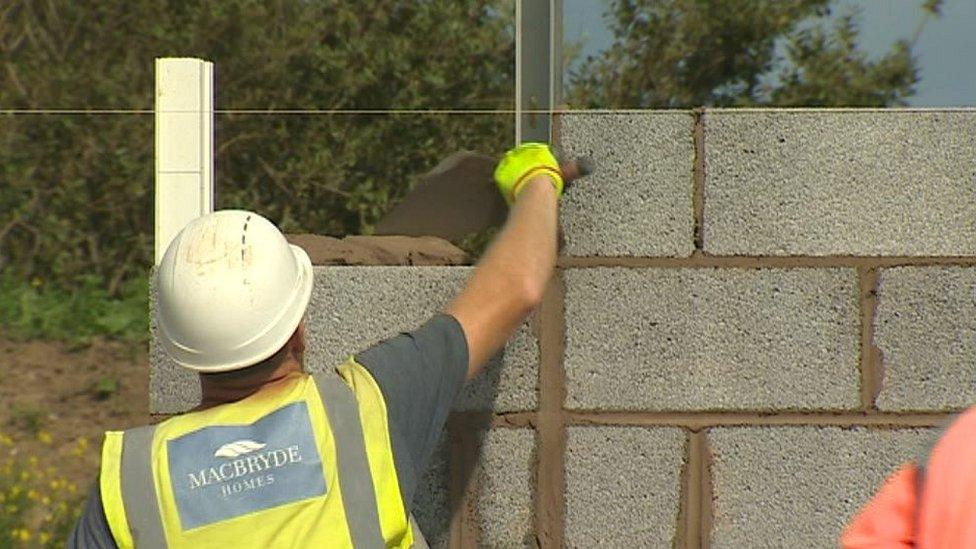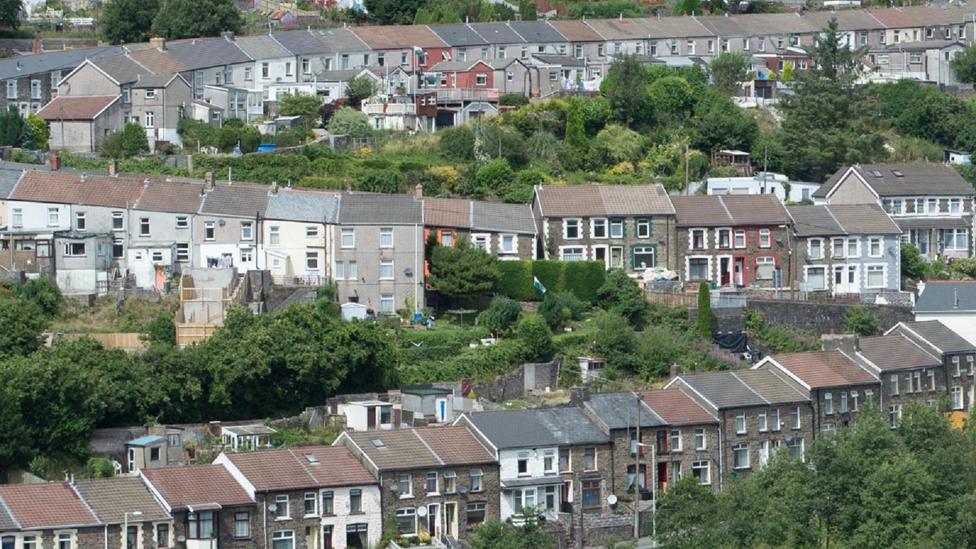GDP: Wales economic growth boosted by construction
- Published

Construction had the strongest performance in 2018
A major indicator of the strength of the economy has been published for Wales for the first time.
Gross Domestic Product (GDP), which measures the value of goods and services produced, rose 0.3% in the last quarter of 2018.
GDP estimates the size of and growth in the economy.
Construction was the strongest sector in 2018 and drove the growth in Wales, according to the Office for National Statistics (ONS).
Quarterly estimates are now available for Wales, as well as nine English regions.
Education, transport and storage also contributed to Welsh growth in the period.
ONS said the new indicators give a "unique insight" into the economic fortunes of Wales and each region of England.
The figures - in use since the 1940s in the UK - have been broken down for Scotland , externalsince 2002, while Northern Ireland, external has published its own index of economic indicators since 2013.

They also include breakdowns for different Welsh industries, by pulling together VAT returns from 70,000 companies.
Previously, they surveyed 3,000 Welsh businesses to produce an annual barometer.
It also means we can compare how the Welsh economy - and different sectors - are performing compared with regions of England, such as the West Midlands and the north east, as well as the UK as a whole.
But it does not give a breakdown in Wales for how different parts of the country are doing - or measure the work done by the likes of people caring for family members.

MacBryde's developments include more than 150 homes being built at Abergele, Conwy
Land supply problem
Of the main industrial sectors, construction sector was the main driver of GDP within Wales in the last quarter of 2018 - a rise of 3.3% - followed by the services sector at 0.09 percentage points.
MacBryde Homes, based in St Asaph, Denbighshire, has been a developer for nearly 35 years - and was listed 14th in the Fast Growth 50 index in 2018., external
Managing director Gwyn Jones said: "Mortgage rates are excellent, banks are lending and evidently there's a need for housing.
"The problem we have is just getting enough supply of land. If we can't get more land, we can't grow further."

Mr Jones said it is interesting and useful to see how Welsh GDP compares to the UK as a whole although he will continue to look at more detailed market statistics too.
"It's important to benchmark ourselves against Britain as a whole," he said. "We have a Welsh Government - and our economy needs to be performing to the same level, if not better than our neighbours."

FSG Tool and Die says it is resilient but that larger deals are harder to negotiate with so much uncertainty
'What is going on is unprecedented'
Any decline in manufacturing hits Wales more severely than the UK as a whole because it represents a larger proportion of the economy (18%) and is therefore more valuable in terms of jobs and productivity.
But its output fell by 0.6% in the final quarter of last year, according to these experimental ONS figures.
Gareth Jenkins, managing director of engineering company FSG Tool and Die in Llantrisant, Rhondda Cynon Taf, said he has not known so much uncertainty in 40 years in business.
FSG works with a wide range of industries, including food and drink, pharmaceuticals and automotive, providing machines that make plastic yogurt pots, drinks cans and gearboxes.
Half its exports are in Europe, but it also trades with Bolivia, Iran, Iraq and China.
"It will be interesting to see the numbers," said Mr Jenkins of the GDP figures.
"The last three months have been particularly challenging, around the global trade situation and Brexit uncertainty. What is going on is unprecedented."
He is worried about a potential no-deal Brexit and that trade arrangements will be complicated to negotiate.
"Generally trade in the EU is a joy, because it's so simple, a phone call, a handshake and it's done. But that's changing - and not for the better."
Welsh Secretary Alun Cairns said: "These very strong figures are testament to the hard-working people in our communities who continue to capitalise on the opportunities created for economic growth by the UK government's modern industrial strategy and export strategy".


How does Wales compare?
Only four nations and regions showed positive growth in the period - and Wales was second highest behind south-east England.
Rob Kent-Smith, head of GDP at the ONS, said: "It's faster than the UK as a whole - and the fastest of the four countries of the UK. We'd always advise some caution about one period's figures but when we also look over the 12 months we see Wales doing better too."
The ONS said the measures were part of its plans to use new data sources to produce "better quality, faster and more detailed statistics that decision-makers need for a modern economy".

Meanwhile, separate quarterly trade statistics, external show the value of exports for Wales for the year ending in June was £17.7bn, up 6.8% compared with the same period the previous year.
Germany continued to be the top export destination, while the EU accounted for more than 60% of exports from Wales, a higher proportion than the UK as a whole.
Exports to the USA are up 23.4% compared to the previous year and exports to Ireland - worth £1.7bn - have risen 50%.
- Published10 May 2019

- Published12 December 2018

